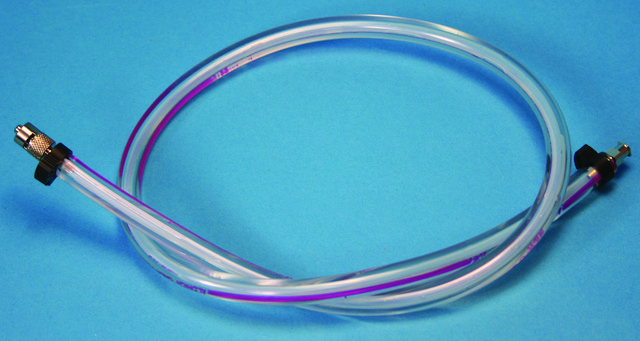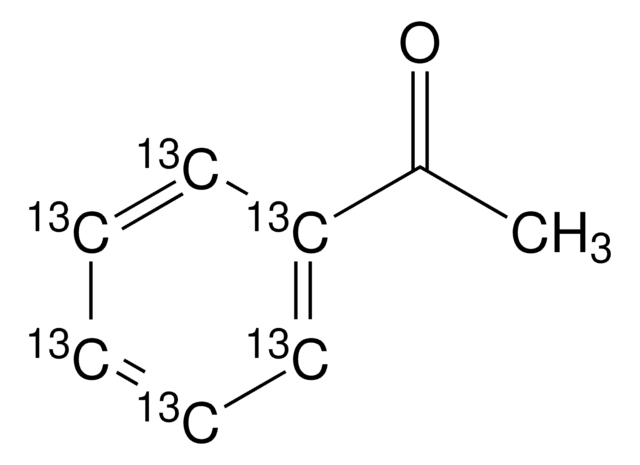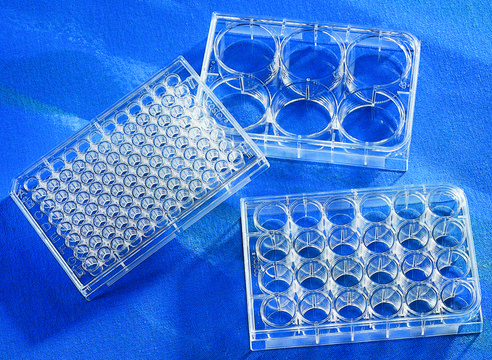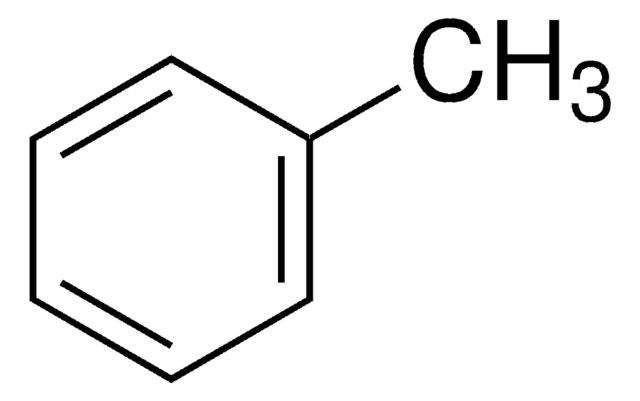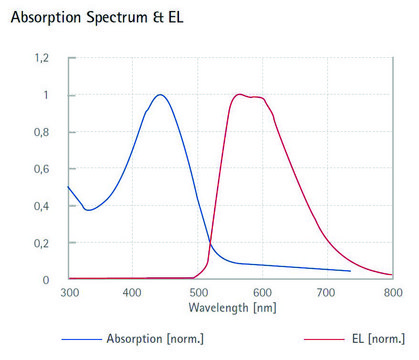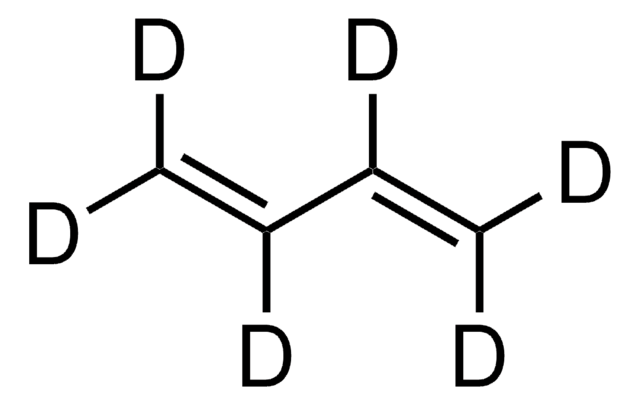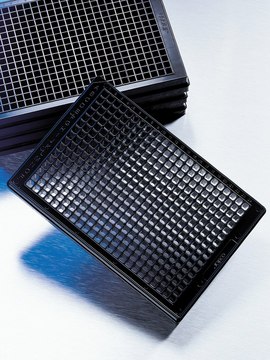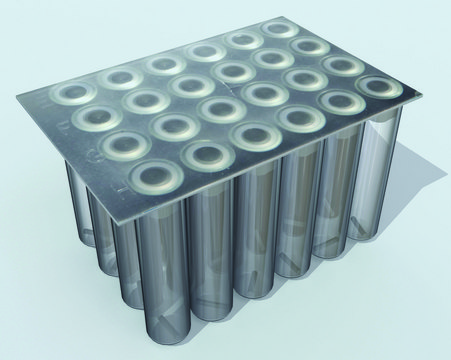推荐产品
包装
pkg of 1 kit
制造商/商品名称
Cytiva PA23001
储存条件
protect from light
颜色
Red
储存温度
2-8°C
一般描述
Cy3™ Mono-Reactive Dye Pack
Cy3™ mono-Reactive Dye Pack
• Convenient way to label antibodies, proteins, drugs, and oligonucleotides with CyDye™ Fluorescent Dyes.
• For use in ELISA, immunoprecipitation, and blotting applications.
• Dyes are packaged in premixed amounts and foil-sealed to ensure consistent labelings.
Contains derivatized CyDye™ that carries only one reactive group on each dye molecule for accurate labeling of amine groups, for example on antibodies or oligonucleotides.
Each kit contains five vials of dye. Each vial is sufficient for labeling 1 mg of protein or 30 nmol of amino groups.
Cy3™ mono-Reactive Dye Pack
• Convenient way to label antibodies, proteins, drugs, and oligonucleotides with CyDye™ Fluorescent Dyes.
• For use in ELISA, immunoprecipitation, and blotting applications.
• Dyes are packaged in premixed amounts and foil-sealed to ensure consistent labelings.
Contains derivatized CyDye™ that carries only one reactive group on each dye molecule for accurate labeling of amine groups, for example on antibodies or oligonucleotides.
Each kit contains five vials of dye. Each vial is sufficient for labeling 1 mg of protein or 30 nmol of amino groups.
应用
Cy®3 Mono 5-pack has been used in smRNA FISH (single-molecule resolution fluorescence in situ hybridization).
For the labelling of biological compounds with Cy3™ monofunctional dye.
储存及稳定性
Please be aware this product may be shipped 90 days before the expiration date. For more information on the batch specific expiration date, please contact technical service.
分析说明
To view the Certificate of Analysis for this product, please visit www.cytiva.com.
法律信息
CyDye:
Cy3B: This product is manufactured under an exclusive license from Carnegie Mellon University and is covered by US patent number 6,133,445 and equivalent patents and patent applications in other countries.
CyQ (or Cy5Q or Cy7Q): These products are covered under US patent number 6,828,116 and equivalent patents and patent applications in other countries in the name of Cytiva.
CytoCy5S: The use of this product in an NTR gene reporter assay is the subject of US patent number 7,579,140 in the name of Cytiva.
CypHer5E: This product or portions thereof is manufactured under license from Carnegie Mellon University and is covered by US patent number 7,615,646.
Cy and CyDye, are - trademarks of Cytiva or one of its subsidiaries.
The purchase of CyDye products includes a limited license to use the CyDye products for internal research and development but not for any commercial purposes. A license to use the Cy and CyDye trademarks for commercial purposes is subject to a separate license agreement with Cytiva. Commercial use shall include:
1. Sale, lease, license or other transfer of the material or any material derived or produced from it.
2. Sale, lease, license or other grant of rights to use this material or any material derived or produced from it.
3. Use of this material to perform services for a fee for third parties, including contract research and drug screening.
If you require a commercial license to use the Cy and CyDye trademarks please contact LSlicensing@cytiva.com.
If you require a commercial license to use this material and do not have one, return this material unopened to Cytiva Bio-Sciences AB, Bjorkgatan 30, SE-751 84 Uppsala, Sweden and any money paid for the material will be refunded.
Cy3B: This product is manufactured under an exclusive license from Carnegie Mellon University and is covered by US patent number 6,133,445 and equivalent patents and patent applications in other countries.
CyQ (or Cy5Q or Cy7Q): These products are covered under US patent number 6,828,116 and equivalent patents and patent applications in other countries in the name of Cytiva.
CytoCy5S: The use of this product in an NTR gene reporter assay is the subject of US patent number 7,579,140 in the name of Cytiva.
CypHer5E: This product or portions thereof is manufactured under license from Carnegie Mellon University and is covered by US patent number 7,615,646.
Cy and CyDye, are - trademarks of Cytiva or one of its subsidiaries.
The purchase of CyDye products includes a limited license to use the CyDye products for internal research and development but not for any commercial purposes. A license to use the Cy and CyDye trademarks for commercial purposes is subject to a separate license agreement with Cytiva. Commercial use shall include:
1. Sale, lease, license or other transfer of the material or any material derived or produced from it.
2. Sale, lease, license or other grant of rights to use this material or any material derived or produced from it.
3. Use of this material to perform services for a fee for third parties, including contract research and drug screening.
If you require a commercial license to use the Cy and CyDye trademarks please contact LSlicensing@cytiva.com.
If you require a commercial license to use this material and do not have one, return this material unopened to Cytiva Bio-Sciences AB, Bjorkgatan 30, SE-751 84 Uppsala, Sweden and any money paid for the material will be refunded.
Cy is a registered trademark of Cytiva
Cy3 is a trademark of Cytiva
CyDye is a trademark of Cytiva
警示用语:
Danger
储存分类代码
13 - Non Combustible Solids
Single-cell profiling reveals that eRNA accumulation at enhancer-promoter loops is not required to sustain transcription
Rahman S, et al.
Nucleic Acids Research, 45(6) (2017)
Jiannan Tang et al.
Nanoscale, 12(22), 12154-12164 (2020-06-04)
Wirelessly controlled nanorobots have the potential to perform highly precise maneuvers within complex in vitro and in vivo environments. Flagellar nanorobots will be useful in a variety of biomedical applications, however, to date there has been little effort to investigate
Louis William Rogowski et al.
Biomicrofluidics, 14(2), 024112-024112 (2020-04-29)
An analysis of heterogeneously flagellated microswimmers inside viscous fluids is presented. Flagella harvested from Salmonella typhimurium were isolated, repolymerized, and functionalized to have biotin at their ends, allowing for chemical attachment along the surfaces of avidin-coated microparticles. Assembled microswimmers were
Samir Rahman et al.
Nucleic acids research, 45(6), 3017-3030 (2016-12-10)
Enhancers are intergenic DNA elements that regulate the transcription of target genes in response to signaling pathways by interacting with promoters over large genomic distances. Recent studies have revealed that enhancers are bi-directionally transcribed into enhancer RNAs (eRNAs). Using single-molecule
我们的科学家团队拥有各种研究领域经验,包括生命科学、材料科学、化学合成、色谱、分析及许多其他领域.
联系技术服务部门